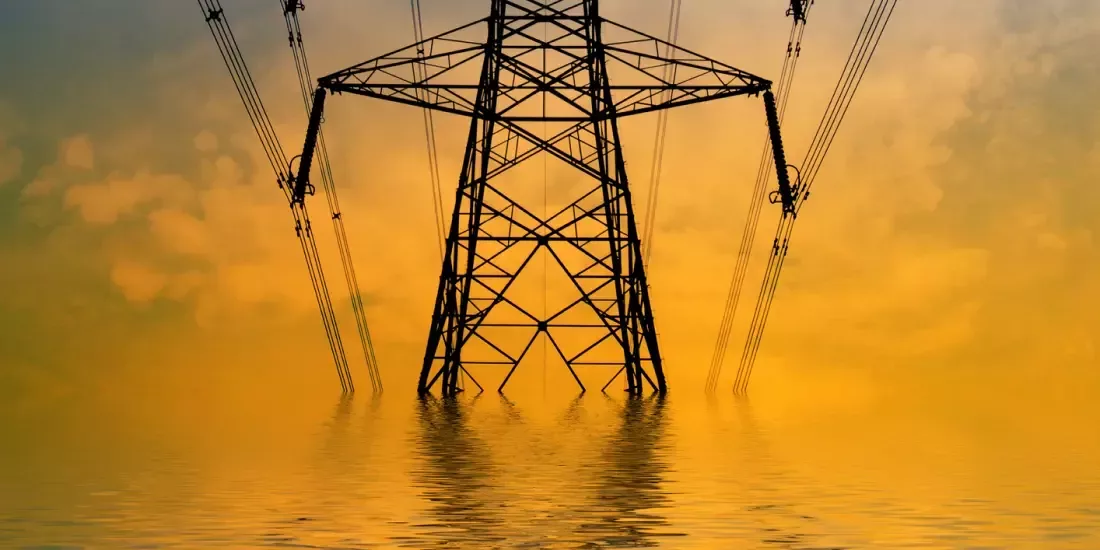The Future of Tidal Power in the UK

Advocates of renewable technologies have been pushing for tidal power for a long time. The constantly shifting tides present a largely untapped reserve of kinetic energy that has the potential to propel renewable electricity generation into the 21st century and beyond. As the UK is an island nation, it’s not unreasonable to think that at least some progress should have been made in this field.
What is Tidal Power?
The Earth’s tides are controlled by the gravitational pull of the Moon. As the elliptical orbit completes its cycle, the sea is pulled and released from its grip, which then causes waves to crash against shores. Tidal power works by harnessing the energy of this movement, either through floating constructions or underwater turbines that are driven by the sea.
Tidal power is not a new concept, but it has huge prospects as it’s much more predictable than solar and wind power. As water is almost 1,000 times denser than air, there is a stronger potential to be able to collect more energy from this source. Unlike other renewable technologies, tidal power can be deployed reliably day and night.
Is Tidal Technology Bad for the Environment?
It’s not yet fully understood how destructive tidal power might be for the environment. As the technology hasn’t been widely deployed around the world, there isn’t huge amounts of data in this area. From what has been used in the past, there are certain issues that need to be addressed.
Dams and barrages limit the flow of water, which not only changes the concentration of salt, but can cause fish to become trapped in turbine blades. The general saltiness of the water can have unintended consequences on wildlife, as can blocking aquatic life from being in one place or another.
There is also the possibility that larger structures can kill flora and fauna, but also change the salinity of the water and disrupt levels of sediment. The noise generated from large turbines, for example, can be enough to keep wildlife away from potential feeding areas. As such, any technologies deployed need to be sympathetic to the environment.
What Tidal Projects are Currently Available in the UK?
MeyGen
The Scottish company has deployed the biggest tidal array with 16m blades. Acting like an underwater wind turbine, these sit on the seabed and spin as the water currents flow past. Four of them are currently in operation.
Orbital Marine Power
The Orbital O2 is said to be the most powerful tidal turbine in the world. Its 680 tonne design floats on the surface of the water, safely moored to the seabed. Dual rotors are lowered into the water and produce enough electricity to power 2,000 homes.
Minesto
Along the coasts of the Faroe Islands, Minesto has come up with an underwater kite design called the Dragon. Able to swim through the water like a kite flies through the air, it harnesses the power of the tide through kinetic spinning movements through a figure of eight motion. It’s also tied to the seabed.
Why Hasn’t Tidal Power Been Deployed at a Larger Scale?
There are environmental concerns with tidal technology, but another issue tends to be the limits to suitable locations. These are mostly remote areas and are usually submerged. While the turbines in these designs don’t spin fast enough to become a threat to sealife, they still generate noise, which can scare them off.
Another barrier is the ongoing maintenance, which tends to be trickier than other technologies. As the sea can be a harsh environment to work in, parts and systems can corrode more quickly, especially on account of the salty water wreaking havoc on metals.
Finally, there is always a cost involved. Tidal power tends to be on the more expensive side than solar and wind power. As the prices of solar panels and wind turbines have fallen by 89% and 70% respectively from 2009 and 2019, there is the expectation that as the tidal industry grows, a similar pattern would be seen with tidal power.
What’s the Potential for Tidal Power?
There have been previous studies to suggest that tidal power has the potential to power 11% of the UK’s electricity demand. Providing that enough support for national projects is in place, there is no reason why the country can’t rely on this technology. It’s hoped that secured funding from the government will help propel the tidal industry for the next 20 years.
The government has provided funding for several tidal stream projects in the UK, and these have the added bonus of being paid higher rates than other forms of electricity generation. An inflated price of £198 per megawatt hour is being offered for these projects, which is much higher than the £90/MWh for nuclear power, £52/MWh for onshore wind, and £47/MWh for solar.
How Can I Generate Power Renewably?
Even if you live on the coast, you probably won’t be permitted to install an underwater turbine to power your home. Your best bet is to make use of solar panels on your property. Despite generating the most amount of energy throughout the summer months, they still work throughout the winter and on cloudy days.
If you’d like to be part of the renewable movement and reduce your reliance on the national grid and energy companies, why not use the button below to find out how much you’d pay for a local solar installation?
